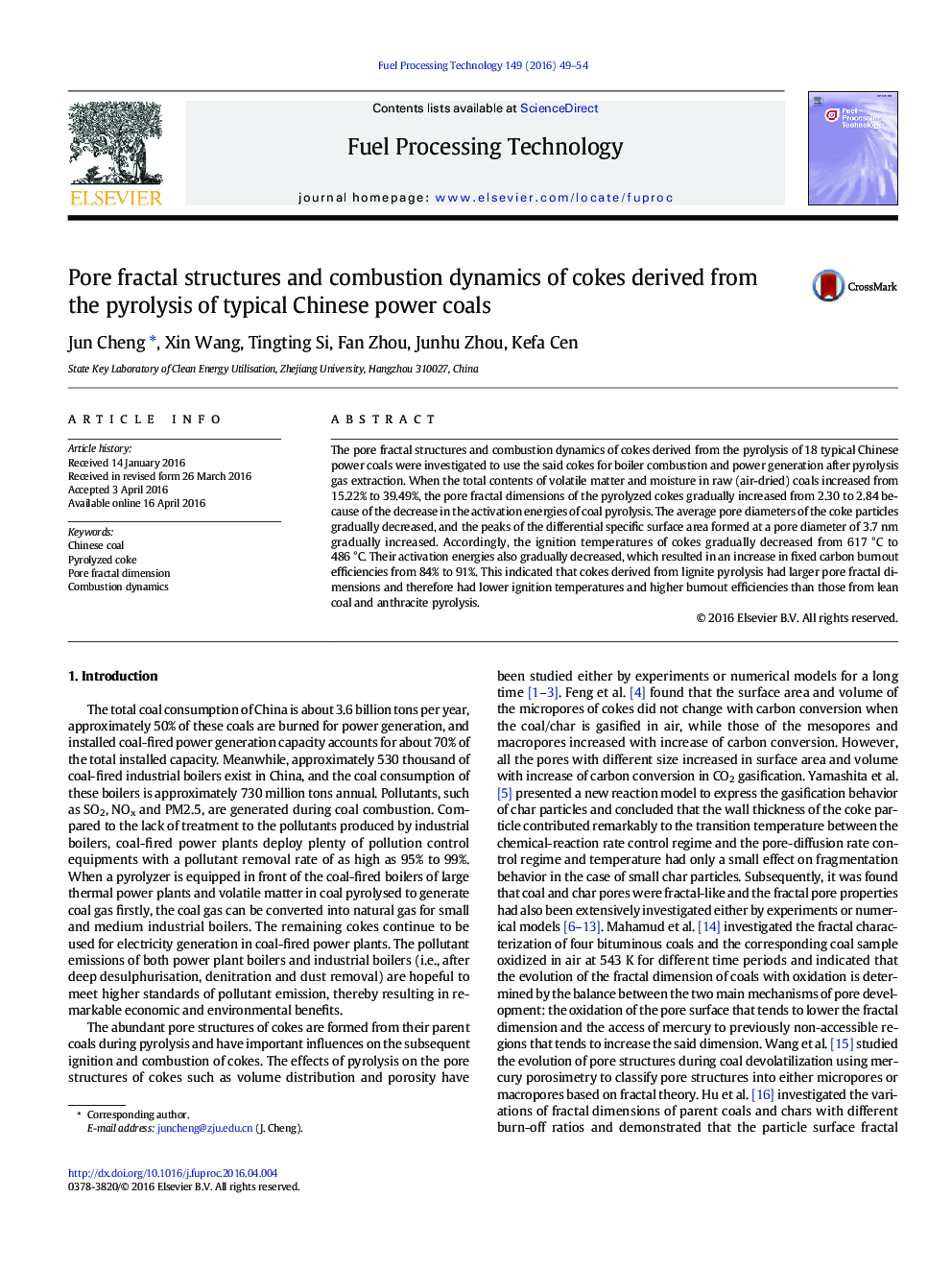| Article ID | Journal | Published Year | Pages | File Type |
|---|---|---|---|---|
| 209152 | Fuel Processing Technology | 2016 | 6 Pages |
•Pore fractal and combustion characteristics of 18 typical Chinese cokes were investigated.•Pore fractal dimensions of cokes increased from 2.30 to 2.84 for activation energies of coals pyrolysis decreasing.•Pore fractal dimensions of cokes increased with average pore diameters decreasing and specific pore volumes increasing.•Ignition temperatures and activation energies of cokes decreased with pore fractal dimensions of cokes increasing.
The pore fractal structures and combustion dynamics of cokes derived from the pyrolysis of 18 typical Chinese power coals were investigated to use the said cokes for boiler combustion and power generation after pyrolysis gas extraction. When the total contents of volatile matter and moisture in raw (air-dried) coals increased from 15.22% to 39.49%, the pore fractal dimensions of the pyrolyzed cokes gradually increased from 2.30 to 2.84 because of the decrease in the activation energies of coal pyrolysis. The average pore diameters of the coke particles gradually decreased, and the peaks of the differential specific surface area formed at a pore diameter of 3.7 nm gradually increased. Accordingly, the ignition temperatures of cokes gradually decreased from 617 °C to 486 °C. Their activation energies also gradually decreased, which resulted in an increase in fixed carbon burnout efficiencies from 84% to 91%. This indicated that cokes derived from lignite pyrolysis had larger pore fractal dimensions and therefore had lower ignition temperatures and higher burnout efficiencies than those from lean coal and anthracite pyrolysis.
